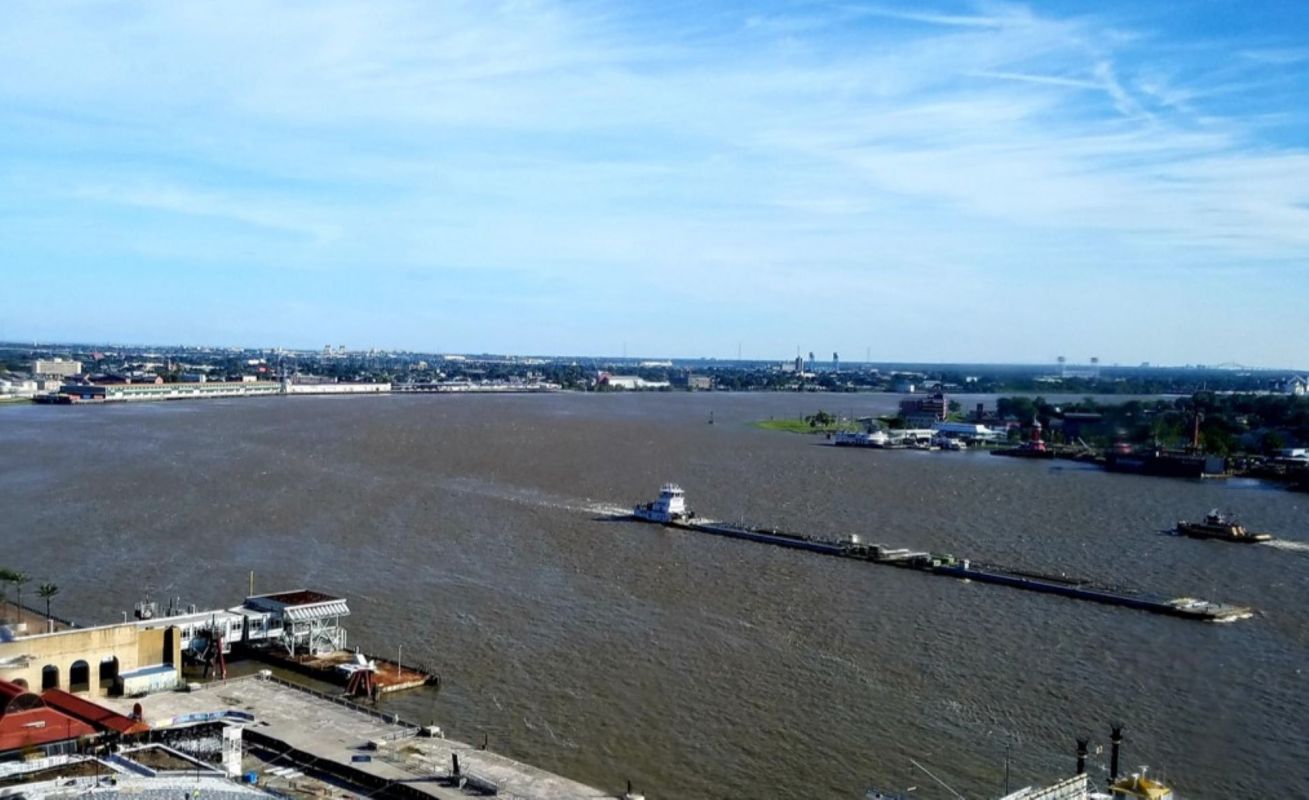Communities along a drought-diminished Mississippi River faced saltwater intrusion pushing upstream from the Gulf of Mexico through September, which threatened drinking water and agriculture until, in October, the saltwater retreated to reduce the intrusion's impact.
What happened?
Over about two months this summer, the Mississippi got much less mighty as drought in the Midwest led to nearly the lowest flows recorded for the river.
In normal times, The Washington Post explained, the river pushes back seawater from the ocean. However, low flow allowed a "saltwater wedge" of dense seawater to advance along the riverbed until it reached almost 70 miles upstream of the Mississippi's mouth on Oct. 2.
The intrusion was aided by past dredging that has carved the river channel below sea level up to Natchez, Miss., helping saltwater slide upstream beneath freshwater flow.
In early October, the saltwater stopped and retreated. By Oct. 10, the wedge that was destined for New Orleans had dropped back more than five miles downstream.
Before that, though, the intrusion had prompted a presidential emergency declaration and construction of a riverbed levee or sill to slow its progress. Salt tainted some people's water — and worried others.
"It's been consuming me … I never thought I'd have to worry about this," Ricky Becnel, a tree farmer on the Mississippi, told the Post.
Mississippi River is extremely low again and dropping, threatening local water supplies.
— Water Mark 🚰 (@OtayMark) July 1, 2023
Another underwater dam may be required to block saltwater intrusion.https://t.co/63xGr9Cf7w by @MSchleifstein via @NOLAnews pic.twitter.com/j66ORuTv4V
Why is saltwater intrusion concerning?
Saltwater intrusions are common. According to the U.S. Geological Survey, they have "occurred to some degree in many [U.S.] coastal aquifers" as upstream saltwater not only affects rivers, but also underground water supplies.
Intrusions have multiple causes (from drought and drawing groundwater to storms and sea-level rise) and have happened before in Louisiana. As the Post noted, officials took intrusions seriously enough to build riverbed sills in 1988, 1999, 2012, 2022, and this year.
That said, there's a sense that this year's intrusion was significant and might have been worse — and that its connection to Earth's overheating can't be ignored.
"The massive saltwater wedge moving up the Mississippi River, the area's main source of drinking water, threatened to expose close to a million residents … to dangerous levels of salt water," noted PBS NewsHour, in an October article titled "Why the saltwater wedge climbing up the Mississippi River is a wake-up call to the region."
"The warming atmosphere is one unmistakable contributor … [and] the frequency and intensity of recent droughts are new," the Post reported, based on a discussion with Tulane University professor Mark Davis.
"It doesn't mean that every instance is climate, but when it happens repeatedly, the impacts are exactly what climate scientists and experts have been saying can happen," Davis added.
What's being done about saltwater intrusion?
The construction of the sill, declaration of emergency, and distribution of drinking water were responses to the saltwater wedge.
These are ways to deal with the effects. Efforts to deal with causes of intrusion include water conservation to reduce drawing on groundwater and actions that governments and individuals can take to limit impacts on Earth's overheating — from water-wise gardening to developing clean energy resources.
Join our free newsletter for cool news and cool tips that make it easy to help yourself while helping the planet.









